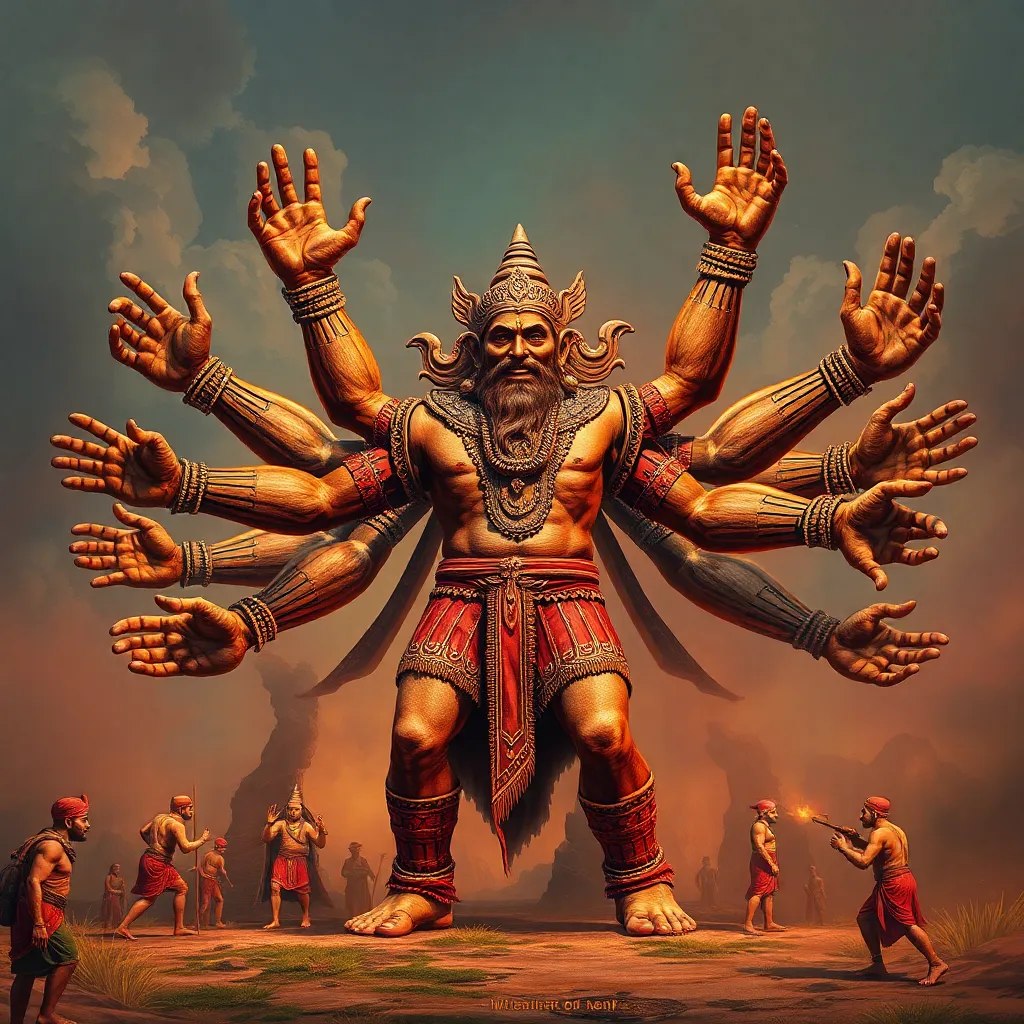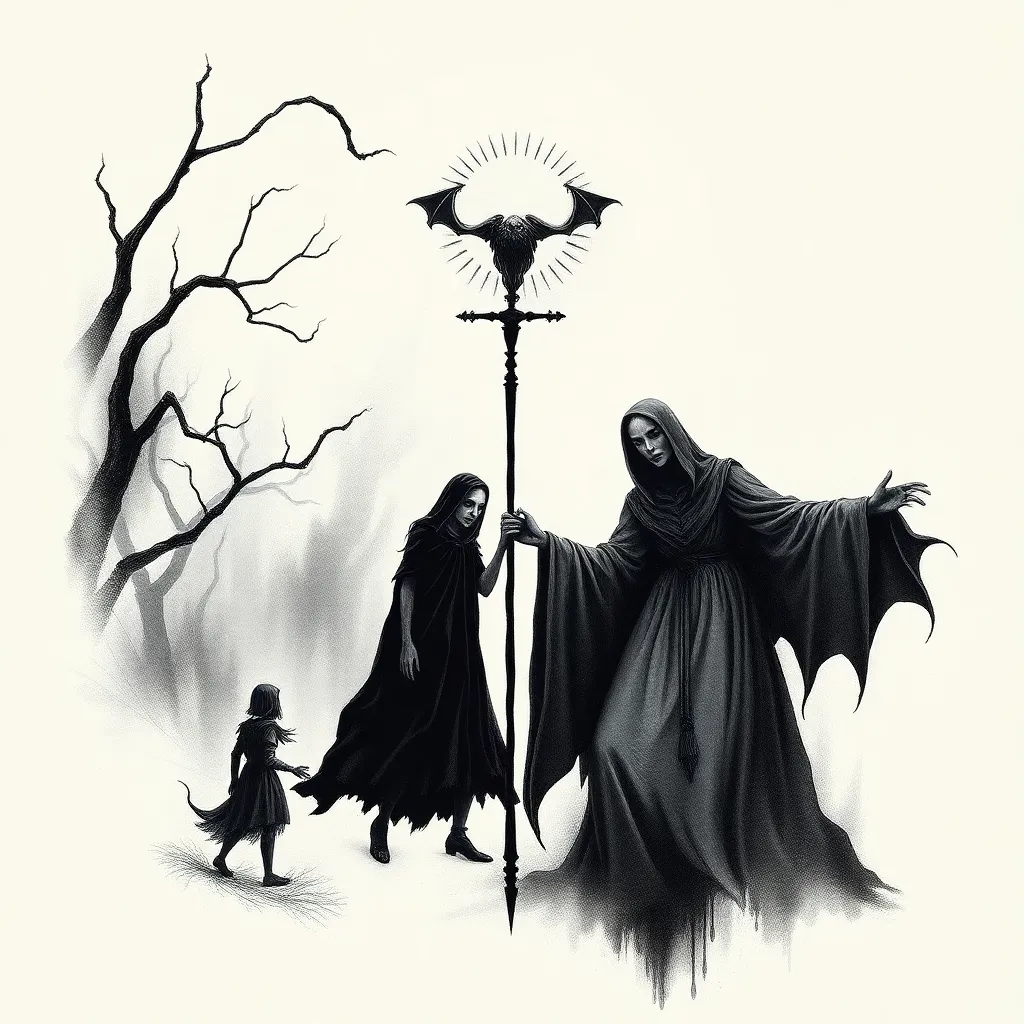The Hundred-Handed Giants in Indian Mythology: Parallels and Comparisons
I. Introduction
The Hundred-Handed Giants, known as the “Hecatoncheires” in Greek mythology, are fascinating figures within Indian mythology. These mythical beings are characterized by their immense strength and unique physical attributes, which set them apart from other mythological entities. The purpose of this article is to explore the parallels and comparisons between the Hundred-Handed Giants in Indian mythology and similar figures in other cultural narratives, particularly focusing on their origins, characteristics, thematic significance, and cultural impact.
II. Origins of the Hundred-Handed Giants
The Hundred-Handed Giants find their roots in ancient Indian texts, particularly the epic tales of the Ramayana and Mahabharata. These texts not only narrate the stories of gods and heroes but also delve into the cosmic order and the nature of good and evil. The giants are often depicted as beings of immense power, created to assist the gods in their battles against chaos and evil forces.
In Hindu cosmology, the Hundred-Handed Giants hold significant importance as they embody the themes of strength and protection. They are associated with the divine order, often acting as guardians during cosmic upheavals. Their creation story is linked to the narrative of the churning of the ocean (Samudra Manthan), where they emerge as part of the forces that maintain cosmic balance.
III. Characteristics of the Hundred-Handed Giants
The Hundred-Handed Giants are described as towering beings with one hundred arms, each capable of wielding immense power. This physical description symbolizes their ability to perform multiple tasks simultaneously, reflecting their role as both warriors and protectors. Their form is not just a representation of physical strength but also serves as a metaphor for the chaotic forces that exist in the universe.
In the context of cosmic battles, these giants play dual roles. They are often perceived as formidable adversaries in the ongoing struggle between good and evil, yet they also serve as protectors of the divine order. Their portrayal as both allies and foes illustrates the complexity of their character in Indian mythology.
IV. Comparative Analysis: Giants in Other Cultures
To understand the significance of the Hundred-Handed Giants, it is essential to draw comparisons with giants from other mythologies, particularly Greek and Norse traditions.
A. Greek mythology: The Hecatoncheires
In Greek mythology, the Hecatoncheires—specifically named Cottus, Briareus, and Gyges—are depicted as giants with one hundred hands and fifty heads. They were born from Gaia and Uranus and were imprisoned by their father but later freed by Zeus to aid in the Titan War. Similar to the Hundred-Handed Giants, the Hecatoncheires symbolize raw power and chaos, serving as formidable allies in the battle against the Titans.
B. Norse mythology: The Jotunn (Giants)
The Norse giants, known as Jotunn or Jotnar, represent a diverse group of beings, often in opposition to the gods of Asgard. They embody chaos and destruction, but also fertility and the natural world. Like the Hundred-Handed Giants, they play a crucial role in the cosmic balance, often engaging in battles with the gods, which highlights the persistent theme of conflict between order and chaos in mythological narratives.
V. Thematic Parallels: Power and Chaos
Across various mythologies, giants frequently embody themes of power, chaos, and creation. In Indian mythology, the Hundred-Handed Giants represent the struggle against chaos, serving as agents of order in the cosmic scheme. Similarly, in Greek and Norse traditions, giants are often depicted as chaotic forces that must be contained or defeated to restore balance.
Key themes include:
- Power: Giants symbolize immense strength and the potential for destruction.
- Chaos: Their existence often represents uncontrolled forces that challenge the gods.
- Creation: The battles involving giants frequently lead to the establishment of new worlds or orders.
VI. Cultural Impact and Legacy
The influence of the Hundred-Handed Giants extends beyond ancient texts, permeating art, literature, and popular culture in India. Depictions of these giants can be found in traditional paintings, sculptures, and dance dramas, where they are celebrated for their strength and valor.
In the Western context, representations of giants also reflect their mythological significance. For instance, the imagery of giants in medieval art often portrays them as monstrous figures, illustrating the struggle between good and evil. This duality resonates with the Indian portrayal of the Hundred-Handed Giants, emphasizing their complex nature.
VII. Modern Interpretations and Retellings
In contemporary media, the Hundred-Handed Giants have been reinterpreted in various forms, including films, novels, and graphic novels. These adaptations often explore themes of strength, loyalty, and the battle against chaos, making these ancient figures relevant to modern audiences.
Examples of modern adaptations include:
- Films: Movies based on the Ramayana and Mahabharata that visualize epic battles involving giants.
- Literature: Novels that reimagine the stories of gods and giants, presenting them in contemporary settings.
- Graphic Novels: Comics that illustrate the tales of the giants, making them accessible to younger audiences.
VIII. Conclusion
The Hundred-Handed Giants serve as a compelling subject for exploration within the broader context of mythology. This comparative analysis reveals significant parallels between their roles in Indian mythology and similar giants in Greek and Norse traditions. Through their portrayal as embodiments of power and chaos, these giants not only reflect the cultural values of their respective societies but also illuminate universal themes that resonate across time and space.
In summary, the Hundred-Handed Giants are more than mere mythological figures; they represent the eternal struggle between order and chaos, and their legacy continues to inspire interpretations in modern culture. Understanding their significance enriches our appreciation of mythology as a lens through which we can understand human experience and the complexities of our existence.



